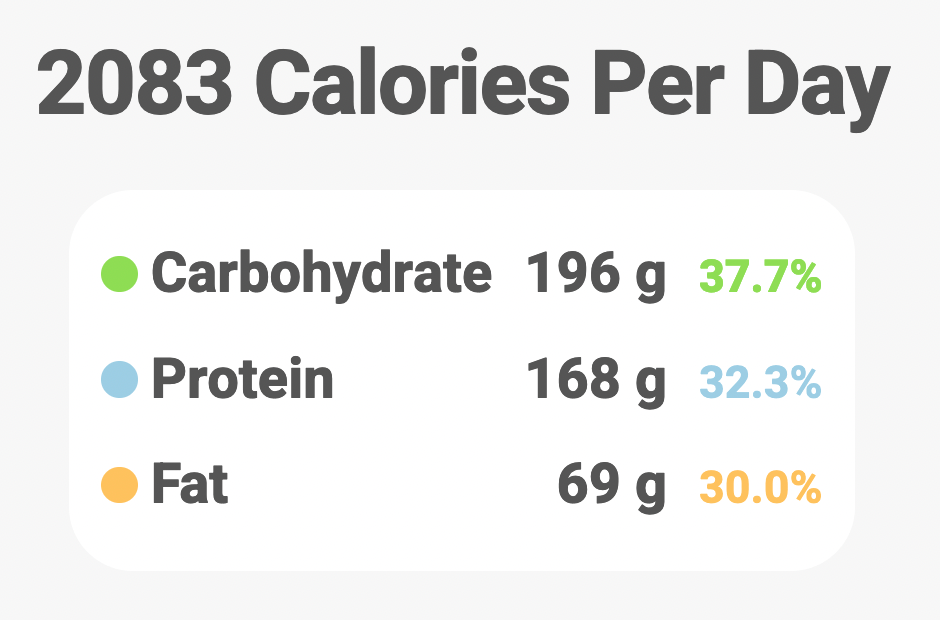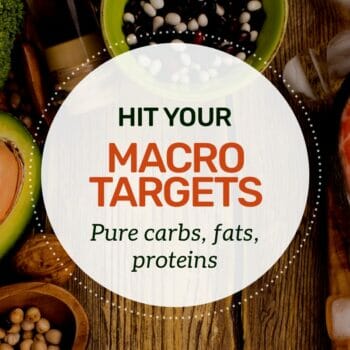How to Calculate Macros If You’re Overweight
Counting macros is an excellent method for losing weight and has helped thousands achieve their weight-loss goals.
However, if you have more than 50 pounds to lose, the process needs some adjustment.
What’s different about fat tissue?
Fat cells are living tissues that need nutrients and blood but use a fraction of the energy required by active tissues like muscle and nerve tissue.
An important factor used in macro calculations is your body weight.
If more than 50 pounds of your weight is fat, it can throw off the results of the equation and lead to an overestimation of how much energy you use.
Fat tissue does not require the same amount of energy as other tissues.
- Adipose tissue (fat) burns two calories per pound per day.
- Muscle burns six calories per pound.
- Nervous tissue 109 calories per pound.
So someone with 75 pounds of fat would only require 150 calories daily to maintain than fat tissue.
How to improve your macro formula
The portion of your weight that does not include fat is called lean mass.
Even if two people weigh the same, the one with more lean mass needs more energy to function.
Most macro calculating formulas do not consider this when determining your energy expenditure (also called TDEE)
How to account for your lean body mass
- Figure out your lean body mass – estimate this using the body fat percentage tool.
- Use your lean body mass as the basis for a macro and TDEE calculation.
Example
This 30-year-old male is 5’10” and weighs 270 pounds. He has a lean body mass estimated at 204 pounds.
He walks for about an hour daily, which would be classified as light activity and factored into the equation.
Using my macro calculator, we get the following results.

Calculation using BODY WEIGHT (270 pounds)

Calculation using LEAN MASS (204 pounds)
There is a 330-calorie difference between the results.
This could make a big difference in a successful weight loss outcome.
Should I ignore fat tissue altogether?
No.
Fat tissue burns calories, and this isn’t entirely ignored by using lean body mass. If your lean mass is close to your ideal body weight, then I suggest adding 25-50 pounds to account for fat tissue metabolism.
Too complicated? Find out how personal macro coaching will help you overcome all these obstacles.
Don’t get disappointed when your daily food level seems lower
If you have significant weight to lose, you might be excited when you see what the calculator tells you to eat.
However, if you get coached, your macros might be lower (adjusted for the excess fat tissue).
Don’t be disappointed.
Even though your daily calorie limit is lower, it’s still much higher than restrictive diets like Nutrisystem.
View article sourcesSources
- McClave SA, Snider HL. Dissecting the energy needs of the body. Curr Opin Clin Nutr Metab Care. (2001) 4(2):143-7
- Leibel, R. L., & Hirsch, J. (1984). Diminished energy requirements in reduced-obese patients. Metabolism, 33(2), 164-170.


 What Are The Best Macros For Weight Loss?
What Are The Best Macros For Weight Loss? How To Count Macros on a Vegan, Vegetarian, or Plant-Based Diet
How To Count Macros on a Vegan, Vegetarian, or Plant-Based Diet Out of a Macro For the Day? Here’s What to Eat
Out of a Macro For the Day? Here’s What to Eat Macros for Gaining Muscle and Cutting Fat
Macros for Gaining Muscle and Cutting Fat How to Calculate Your Macros for Body Transformation
How to Calculate Your Macros for Body Transformation